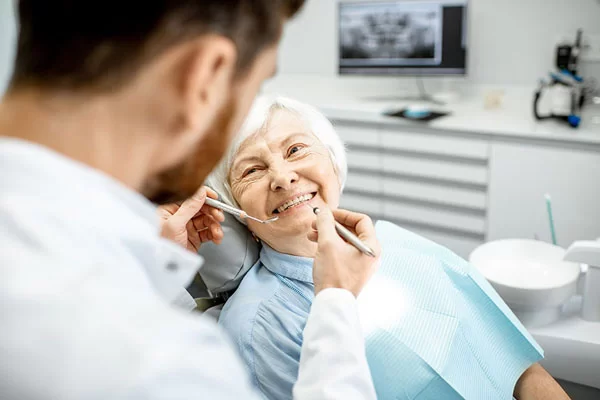Please note: Our Hilliard dental office may not offer this service directly. Call us at (614) 771-6060 to learn more about your options.
Key Takeaways
- Purpose & Use: General anesthesia in dentistry is used for complex dental procedures, severe dental anxiety, children, and patients with special needs to ensure a completely unconscious, pain-free experience.
- Safety & Monitoring: Procedures under general anesthesia are carefully monitored by trained anesthesia providers, tracking vital signs such as heart rate, blood pressure, oxygen levels, and body temperature to maximize patient safety.
- Benefits & Efficiency: Patients experience no pain or anxiety, multiple dental procedures can be completed in a single session, and dental professionals can work efficiently and precisely.
- Risks & Considerations: While generally safe, general anesthesia carries potential risks like allergic reactions, respiratory or cardiovascular complications, and grogginess after the procedure; careful evaluation of medical history is critical.
- Local Access & Alternatives: Dr. Nathan Desai in Hilliard, OH, offers sedation dentistry options including nitrous oxide, oral sedation, and IV sedation. General anesthesia may be performed at a surgical center if needed, with insurance coverage varying by procedure.
Do You Need General Anesthesia for Dental Treatment?
Dental anxiety, dental phobia, and fear of painful procedures keep many patients from getting the care they need. Unfortunately, delaying treatment often leads to more complicated dental work later on. In some cases, patients may require or request general anesthesia dentistry in Hilliard to feel completely at ease during dental surgery or extensive treatment.
If you’re searching for a dentist near Hilliard, OH, schedule an appointment with Dr. Nathan Desai at our Hilliard dental office by calling (614) 771-6060. We proudly serve patients from Columbus, Dublin, Upper Arlington, Grove City, Westerville, and surrounding Ohio communities.

What Is General Anesthesia in Dentistry?
General anesthesia uses specialized anesthetic drugs delivered by IV sedation or inhalation to place patients in a state of controlled unconsciousness. While completely unconscious, patients:
- Feel no pain or painful stimulation
- Remain still in the dental chair
- Have no memory of the procedure
- Avoid dental fear and anxiety-related stress
Unlike local anesthesia or nitrous oxide (laughing gas), general anesthesia works by blocking awareness entirely. Because it involves deeper sedation, it’s usually administered in a hospital or ambulatory surgery center with an anesthesiologist or dental anesthesiologist present for patient safety.
When Is General Anesthesia Used in Dentistry?
General anesthesia is typically reserved for adult patients and children who can’t otherwise be treated safely with local anesthetics or moderate sedation. Common situations include:
- Complex oral surgery: Wisdom teeth extraction, jaw surgery, dental implant placement, and cleft palate repair
- Severe dental anxiety or dental phobia: Patients are unable to tolerate procedures with local anesthesia or IV sedation
- Children and patients with special needs: Those with physical limitations, autism, or cerebral palsy who can’t remain still for dental procedures
- Multiple dental treatments: Full-mouth restorations or several procedures completed in one visit
- Severe gag reflex: Where routine dental treatment is otherwise impossible
Benefits of General Anesthesia
There are many benefits of general anesthesia for dental treatments, such as:
- Pain-free treatment: Patients feel no pain or discomfort during the procedure
- Stress-free visits: Ideal for those with severe dental anxiety or fear
- Efficiency: Multiple treatments can be completed in one session
- Safety: Patients remain still, allowing dentists to work with precision and reduced risk
How General Anesthesia Works
1. Patient Evaluation
A thorough review of your medical history, medications, and other potential medical complications is performed. Conditions like high blood pressure, Alzheimer’s disease, or previous adverse reactions are considered carefully, following American Dental Association (ADA) practice guidelines.
2. Preparation
Patients fast for several hours before anesthesia. The dental team prepares venous access (IV line), airway support (such as an endotracheal tube if required), and monitoring equipment for vital signs (heart rate, body temperature, blood pressure, oxygen).
3. Administration & Monitoring
The anesthesiologist or nurse anesthetist induces deep sedation with IV anesthetics or inhalation agents mixed with pure oxygen. Throughout treatment, the patient’s vital signs are continuously monitored to ensure patient safety.
4. Post-Operative Care
After treatment, patients are monitored during recovery. Grogginess, nausea, or confusion may last for several hours. Written post-operative instructions are provided, and patients must have a responsible adult accompany them home.

Risks of General Anesthesia
While generally safe, general anesthesia dentistry does carry risks, particularly for patients with pre-existing medical conditions. Potential complications include:
- Allergic reactions
- Respiratory issues
- Cardiovascular complications
- Nausea or vomiting
- Rare cognitive effects in older adult patients
- Increased risk of complications in patients with other medications or chronic health issues
Cost of General Anesthesia
The cost of general anesthesia in dentistry typically ranges between $400–$1,000 per hour, depending on:
- The procedure’s complexity (wisdom teeth extraction, dental implant placement, full-mouth surgery)
- Duration of anesthesia required
- Anesthesiologist or facility fees (hospital vs. dental office)
- Insurance coverage (many plans cover medically necessary sedation)
Alternatives to General Anesthesia
For patients who do not require full unconsciousness, alternatives include:
- Nitrous oxide (laughing gas): Mild relaxation with fast recovery
- Oral conscious sedation: Anti-anxiety medication taken before treatment
- IV sedation (twilight sleep): Deep relaxation without being completely unconscious
- Local anesthetic: Numbs only the treatment area
Frequently Asked Questions
Is there a dentist near me in Hilliard, OH, who offers sedation dentistry?
Yes! Dr. Nathan Desai offers multiple sedation dentistry options in Hilliard. While general anesthesia may be performed at a hospital or surgical center, our office provides nitrous oxide, oral sedation, and IV sedation for a comfortable dental experience.
How long will I be unconscious with general anesthesia?
Most dental procedures under general anesthesia last one to several hours. You’ll remain completely unconscious and monitored until it’s safe to wake you up.
Is general anesthesia safe for children and patients with special needs?
Yes, when administered by a trained anesthesia provider in a controlled environment, it can be safe and effective. It’s often used for children, patients with autism, or those with cerebral palsy who can’t tolerate dental treatment otherwise.
Will insurance cover my anesthesia costs?
Dental insurance may cover general anesthesia if it’s medically necessary. Coverage varies, so check with your provider.
Contact a Dentist Near You in Hilliard, OH
If you are searching for general anesthesia dentistry near you, contact our dental office in Hilliard, OH, today at (614) 771-6060. Dr. Desai and our team welcome patients from Columbus, Dublin, Upper Arlington, Grove City, Westerville, and surrounding areas. We’ll review your dental treatment needs, discuss anesthesia options, and help you get the safe, comfortable dental care you deserve.






